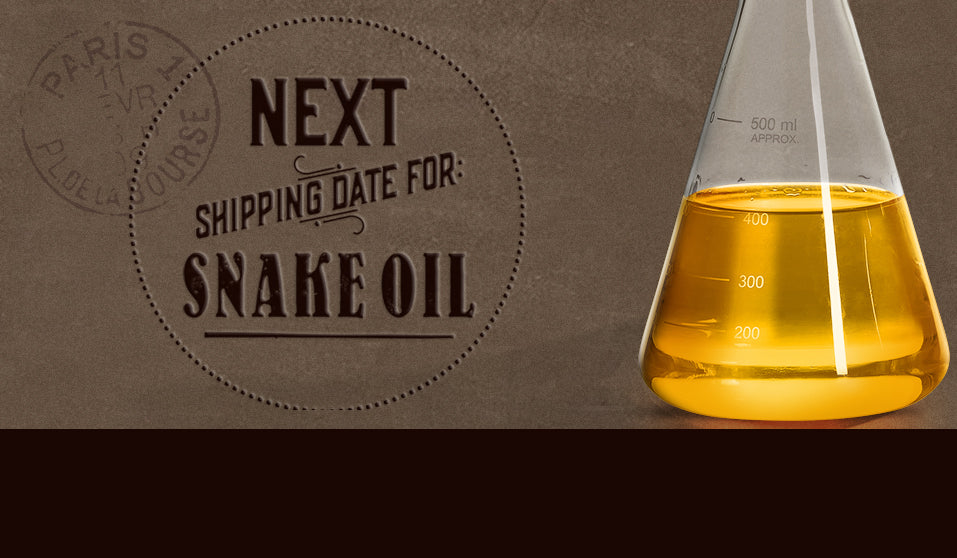How Tanks Work... or rather When Tanks Don't Work
Jul 10, 2017 | 0
Why does my juice taste burnt?
This is a very common issue for many people new to vaping, and the diagnosis is almost always the same- The coil has gone dry and is overheating.
This situation is called a "Dry-Hit" - it ranges from a slight burnt taste to a horrid acrid taste that can almost knock you back!
E-Cigarettes fall into various categories:
Drippers
These are very popular among the more experienced vapers, because they allow many different style coil builds, and endless tweaking to produce the style of vape the user enjoys. You don't get dry-hits with drippers, unless you vape them dry by accident. The vaper is in direct control of the juice flow.
Genesis Style Tanks
A true Genesis tank, popular in the early days (2012+) used a vertical Stainless Steel Mesh wick. There are a few modern style gennies which use cotton wicks with a horizontal coil. This style of tank uses the natural tilting of the device to keep juice flowing to the wick, so they tend to not suffer from dry-hits.
Pressure Difference Tanks
Probably 95% of all E-Cigarette tanks fall into this category, and are the subject of this article.
These tanks rely on there being a slightly higher pressure inside the tank to ensure juice gets transported to the coil via the cotton wick. The cotton wick serves 2 purposes equally. It is there to wick the juice to the coil, and also to act as a slow leak seal.

Equilibrium

Vaping Phase
--------

Recovery Phase
What happens when they go wrong?
As you now see it is the cotton that controls both the wicking and the recovery pressure inside the tank. Most manufacturers pack slightly too much cotton into their stock coils. They do this because they cannot afford their tanks to leak, bear in mind their tanks have to be usable across a wide range of different juices with different PG/VG ratios. They err on the side of caution and test with the thinnest high PG juices.
This overpacked cotton tends to restrict the recovery phase, so the higher atmospheric pressure cannot leak back into the tank to equalise the partial vacuum inside. As you continue to vape the pressure difference gradually reduces, and eventually the low pressure inside the tank is equal to the low pressure your vaping is creating under the coil.
Stalled Phase
Turning up the power simply vaporises the stagnant juice until none is left on the coil – THIS IS NOW A DRY HIT.
--------
Overpacked cotton seems to be the major cause of the tank stalling, and is the reason why some coils work better than others, in terms of flavour, even within a single box of coils, the manufacture varies.
Of course it is not the only reason, another major influence is the age of the coil. The cotton touching the coil will start to deteriorate and leave a carbon layer which contributes to the failure of recovery. This is why coils have variable limited lifespans.
Resolution
What you have to do, is to get that pressure difference back. Here are a couple of suggestions:
Open the tank
Simply open the tank to allow atmospheric pressure back in and release the partial vacuum.
With top fill style tanks, simply the act of starting to remove the filler cap will break the seal, and you will see air bubble up through the tank, releasing the low pressure.
With bottom fill tanks, you just invert the tank, start to unscrew the base a couple of turns to allow air in.
Primer Pulls
Another very effective method is to do a couple of dry “primer pulls”. This is where you draw sharply through the mouthpiece while fluttering your finger over the airflow hole, without firing the mod.
This primer pull, creates a strong low pressure under the coil, which is literally sucking juice to the coil. This creates a bigger vacuum inside the tank, so that when you stop drawing on the mouthpiece there will be sufficient pressure difference to break the cotton seal, allowing air to get back into the tank to release the low pressure inside.
Again you will see an air bubble or two rising through the liquid, proving the vacuum has been released.
The newer top-airflow tanks like the Nautilus X coils or Cubis Coils, are much harder to get back into equilibrium, and the only solution I have found that works is the "Open the Tank" method, which unfortunately can cause quite a bit of flooding. After a few vapes it will clear.
A better method is to open the tank, remove the coil, blow or shake out out excess juice form the coil, then reassemble.
Both of these methods above are only temporary fixes, and they will invariably stall again. It is unfortunately an inherent problem with the design. Even when building your own coils on an RBA type device, the old adage of "Less is More" holds true when using cotton.
<<< Simon Wilson - Tmax Juices - February 2017 >>>



